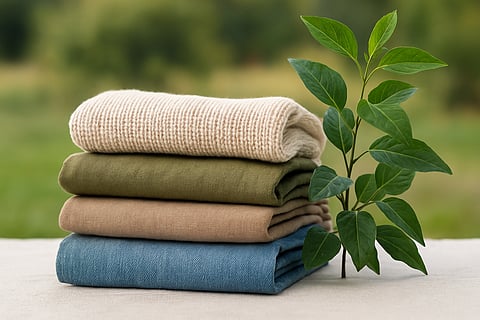Green Threads: How Sustainable Fashion is Stitching a Better Future for the Planet
In recent years, the fashion industry—a sector once criticized for its massive environmental footprint—has started embracing sustainability with growing urgency.
This transformation is largely driven by the emergence of green modes in textiles and fashion, which refer to eco-friendly practices, materials, and innovations aimed at reducing the industry's ecological impact.
These changes are not only reshaping how fashion is produced and consumed, but also playing a pivotal role in safeguarding the environment.
What Are Green Modes in Textiles and Fashion?
Green modes encompass a variety of environmentally responsible approaches across the textile and fashion supply chain. These include:
Use of Sustainable Materials: Organic cotton, hemp, bamboo, and Tencel (from sustainably harvested wood pulp) are replacing synthetic and resource-intensive fabrics. These materials require less water, fewer chemicals, and are biodegradable.
Eco-Friendly Dyeing Techniques: Traditional dyeing processes pollute vast amounts of water. In contrast, green innovations like natural dyes, digital printing, and waterless dyeing significantly reduce water and chemical usage.
Recycling and Upcycling: Brands are increasingly turning textile waste and used garments into new products, minimizing landfill use and resource extraction.
Low-Impact Manufacturing: Factories are adopting renewable energy sources, reducing carbon emissions, and improving waste management to ensure cleaner production methods.
Circular Fashion Models: Emphasizing reuse, repair, and resale, circular fashion aims to keep clothing in use for as long as possible, reducing the demand for new production.
Positive Environmental Impacts
The shift toward greener practices in fashion is producing tangible benefits for the planet:
1. Reduction in Water Usage and Pollution
Traditional textile production is water-intensive and heavily polluting. Organic cotton, for example, uses up to 91% less water than conventional cotton. Eco-dyeing methods also minimize toxic wastewater discharge into rivers and oceans.
2. Lower Carbon Emissions
Sustainable materials and energy-efficient manufacturing processes significantly cut greenhouse gas emissions. Many brands are now aiming for carbon-neutral or even carbon-negative operations.
3. Waste Minimization
By embracing recycling and circular models, the fashion industry is beginning to reduce the 92 million tonnes of textile waste generated globally each year. Brands like Patagonia, Eileen Fisher, and H&M are offering clothing take-back schemes to close the loop.
4. Protection of Ecosystems
Sourcing raw materials responsibly helps preserve biodiversity. Organic farming avoids harmful pesticides, while sustainable forestry ensures natural habitats aren’t destroyed for fabric production.
Consumer and Industry Transformation
Green fashion is no longer niche. It is becoming mainstream, driven by growing consumer awareness and demand for transparency. Eco-conscious buyers now look for certifications like GOTS (Global Organic Textile Standard), Fair Trade, and OEKO-TEX labels when shopping.
At the same time, global brands and designers are investing in green innovation, creating collections that are stylish and sustainable. Startups and tech firms are also contributing by developing biodegradable fabrics, AI-driven waste-reduction tools, and blockchain systems for supply chain transparency.
The Road Ahead
While progress is evident, the journey toward a truly sustainable fashion industry is ongoing. Systemic change will require greater collaboration between governments, brands, and consumers. Policies encouraging ethical practices, incentives for green technology adoption, and education around conscious consumption are crucial next steps.
Conclusion
Green modes in textiles and fashion are revolutionizing an industry once synonymous with waste and excess. By embracing sustainability, the fashion world is not only redefining trends but also contributing to a healthier planet. As innovation accelerates and awareness spreads, fashion is proving that style and sustainability can go hand in hand.


